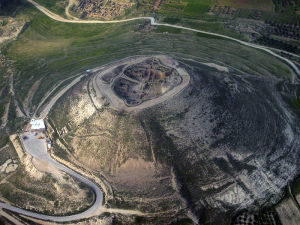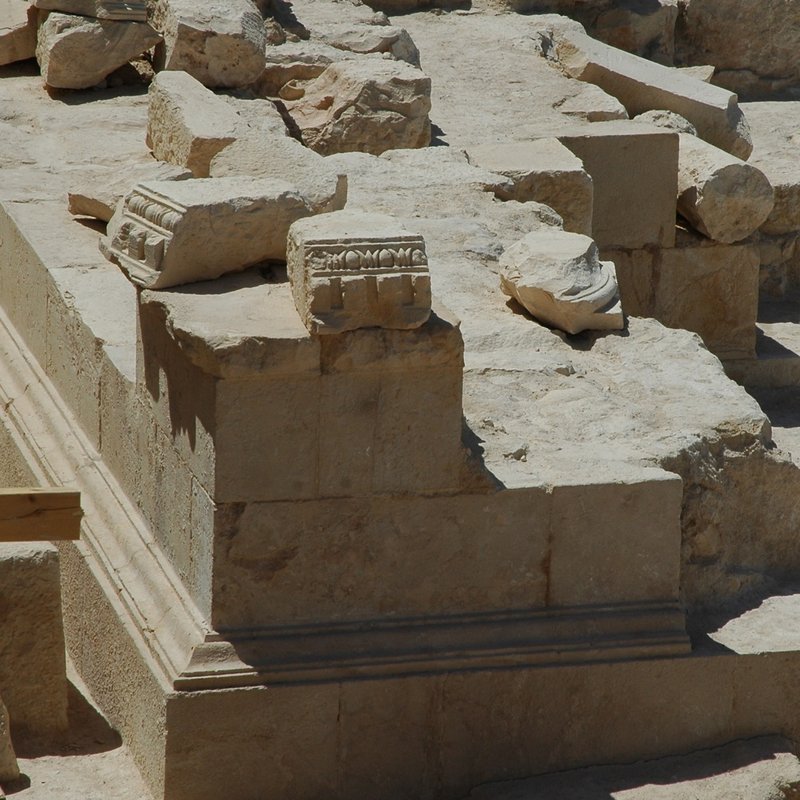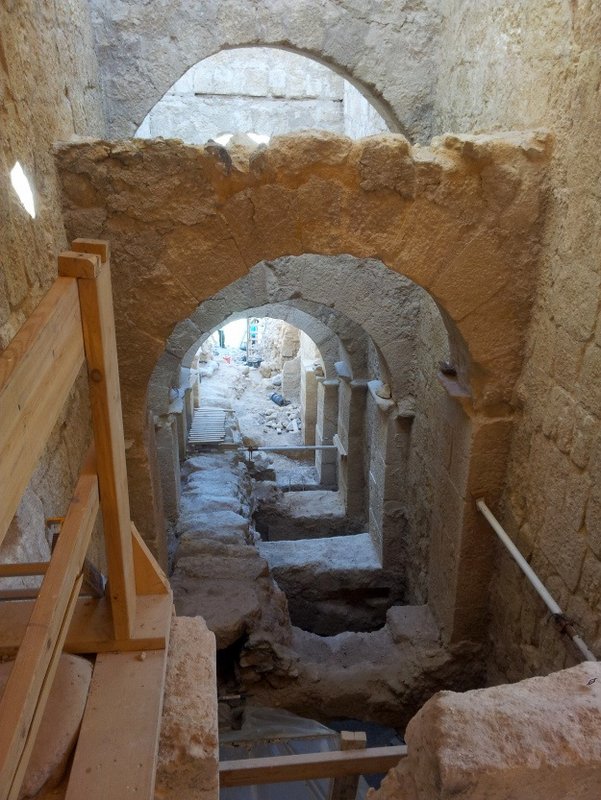
It was in 2007 when the late archaeologist Ehud Netzer announced to the world what was arguably the prize find of his life—the discovery of the remains of the tomb and possible sarcophagus of the one and only Herod the Great himself, who for many, both anciently and today, stands among the great villains of history. But aside from his designs, according to the Christian New Testament gospels, to dispatch the Christ child along with the firstborn of many other families, as well as banishment of members of his own family according to other writings, he was also perhaps the savviest politician, statesman, and greatest builder in first century Judea. It was he who planned and commissioned the building of the massive expansion of the Second Temple, the Temple Mount, and its associated structures in Jerusalem, in its time perhaps the most monumental religous enterprize and wonder of the world. It was he who planned and built the city and harbor of the monumental city of Caesarea Maritima on the Mediterranean coastline, a major port, and the towering fortress complex of Masada near the Dead Sea. And it was also he who planned and commissioned the construction of the only fortified palace complex which bears his name by decree and where he planned to be buried—Herodium.
Netzer died before he could finish his excavation work at Herodium. On October 27, 2010, while leaning on a wooden railing that overlooked a steep slope near where he had made his spectacular tomb discovery, the railing gave way. He fell ten feet, rolled, then fell another ten feet, critically injuring his head, neck and back. Two days later, he passed on. The news of his death shocked the community of scholars, scientists, students, volunteers and everyone who had worked intimately with him for decades.
_______________________________________
 Detail view of a section of the remains at Herod’s tomb. Courtesy Shmuel Browns
Detail view of a section of the remains at Herod’s tomb. Courtesy Shmuel Browns
_______________________________________
But excavation work goes on at Herodium to this day. Archaeologists have recently uncovered a staircase at the site, left unfinished for whatever reasons by its architects and workers 2,000 years ago. Associated with the staircase were impressive archways and an entrance hall with plastered walls and frescoes.
Shmuel Browns, a photographer and professional tour guide who participated in the Netzer excavations of the mausoleum complex in 2008, writes briefly of his recent visit to Herodium and his experience with the excavators at the staircase site. His account can be read at his blog, Israel Tour Guide/Israel Tours. Other work at Herodium includes ongoing restoration and investigation of the loggia, or VIP box at the Herodium theater, which features colorful panels on plaster and unique paintings in secco (paint applied on top of dry plaster). More about the loggia can be read at A Look into the Loggia at Herodium.
_______________________________________
 The staircase and archways as exposed through recent excavations. Courtesy Shmuel Browns
The staircase and archways as exposed through recent excavations. Courtesy Shmuel Browns
_____________________________________
Readers can find out more about the excavations at Herodium in the article, Netzer’s Legacy: The Wonders of Herodium, written by Shmuel Browns for Popular Archaeology Magazine.
___________________________________________________________
Read about the most fascinating discoveries with a premium subscription to Popular Archaeology Magazine. Find out what Popular Archaeology Magazine is all about. AND MORE:
On the go? Get the smartphone version of Popular Archaeology as an app or as an ebook.
Just released!
The special new premium quality print edition of Popular Archaeology Magazine. A beautiful volume for the coffee table.
Travel and learn with Far Horizons.
____________________________________________
Popular Archaeology’s annual Discovery Edition eBook is a selection of the best stories published in Popular Archaeology Magazine in past issues, with an emphasis on some of the most significant, groundbreaking, or fascinating discoveries in the fields of archaeology and paleoanthropology and related fields. At least some of the articles have been updated or revised specifically for the Discovery edition. We can confidently say that there is no other single issue of an archaeology-related magazine, paper print or online, that contains as much major feature article content as this one. The latest issue, volume 2, has just been released. Go to the Discovery edition page for more information.









